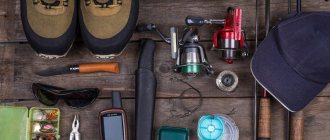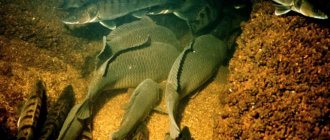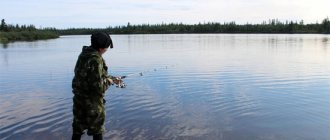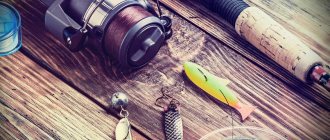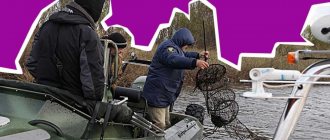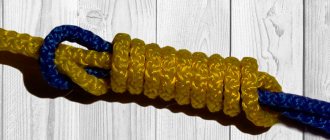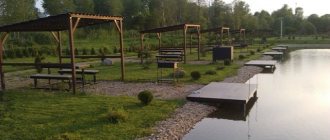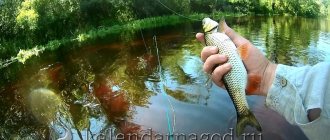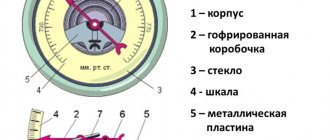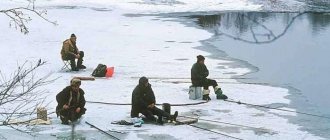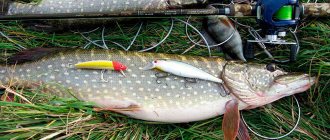What to take with you on a summer fishing trip? What to take for net fishing for a day? What should a fisherman take with him when fishing with rods? A complete list of things and products for 2021 from experienced fishermen especially for you.
The first thing you need to decide is how long you are going, with or without an overnight stay. After all, you will obviously need more things for an overnight stay.
The second, important question is whether children are traveling with you, because their needs are higher than those of adults. In this list you will find things and products for everyone for a day or a day.
Fishing with an overnight stay
The first overnight fishing trip is an important moment in the life of any fisherman. It is necessary to prepare thoroughly for it.
Fishing gear
- Rod. It is selected depending on what time of year the fishing will be done and what kind of fish the fisherman is going to hunt.
- Spare leashes.
- If you wish, you can take a net with you and try fishing with it.
Bait
Any bait used for summer or winter fishing is suitable for this purpose.
It is important to create the correct storage conditions for it:
- It is better to dig up the worm immediately before fishing. If this is not possible, then you need to prepare them in advance. It is recommended to store individuals only in a closed box or box. They must be equipped with holes for ventilation.
- Bait that will be used in the first hours of fishing can be stored in metal cans.
- Do not store animals in the sun. It is recommended to choose the coolest possible place for it. If possible, it is better to bury the storage container in the ground.
Tools
- Hiking hatchet. Allows you to secure stands for blades, sharpen pegs and chop firewood. It is advisable to choose a tool that is presented in the form of a hammer on one side, and a small hatchet on the other.
- Gas-burner.
- Flashlight.
Personal items
- Food and water. It is recommended to take several bottles of water and tea in a thermos. It is also recommended to take food that does not spoil quickly.
- Spare clothes, shoes and underwear.
- Umbrella or waterproof raincoat.
- Hat, sunglasses.
- Toilet paper, hygiene and washing products.
- Towel.
- Cooking utensils, cutlery and knife.
- Insect repellents.
- Matches or lighter.
Things for an overnight stay
- A tent is necessary for spending the night or shelter from the rain.
- It is recommended to take it with you even if the fisherman arrived by car and plans to spend only one night here.
Summer fishing
Summer fishing is significantly different from fishing at any other time of the year. For many fishermen, this is the most difficult period, because many food sources appear in the sea reservoir, and accordingly, the fish become well-fed and picky.
To return home with your catch, you should carefully prepare for fishing and take with you everything you need.
Fishing gear
The choice of gear directly depends on how the fisherman intends to fish.
It could be:
- The most common float rod.
- A special rod designed for fly fishing.
- A more professional fishing rod is a spinning rod.
- Necessary equipment for the selected fishing rod. This could be a fishing line, a reel, hooks, sinkers, spoons, laces, floats and much more.
- Landing net.
- Net.
- A special release designed for unhooking bait, for example, from snags or thickets.
- A container for storing caught fish.
- Fishing rod stand.
- Soft cage.
- Various fishing rod attachments.
You should also not forget about other important things, namely, bait, bait and additional tools.
Bait
It is worth considering: the fish feeds only on fresh prey.
The bait depends on what kind of prey the fisherman wants to get.
There are several of the most popular ones:
- First of all, these are, of course, worms. They can be dung, water and rain. They cannot be stored for long periods of time, so it is recommended to collect them the day before or before fishing.
- Large fish bite on live bait. It is represented by a smaller individual caught in the same reservoir.
- You can use various insects as bait , for example, flies or their larvae.
- Small fish readily bite on maggots or bloodworms. A larger specimen can be caught using a caddisfly or jig.
- You can also use a homemade product , namely bread, flour or corn.
- Some varieties of fish bite on sweet potatoes.
- Most fish feed on their own kind. Therefore, it is recommended to use leeches, frogs or tadpoles as bait.
It is recommended to store bait in tightly closed metal cans. If there are none, then you can use a box.
Lure
Bait is mainly used only when “hunting” for pike. The yawner acts as it. It allows you to open the fish's mouth and safely remove the hook from it.
Tools
Also, you need to take additional tools that may be needed while fishing:
- Shovel. Necessary if you want to dig up worms just before fishing.
- Axe. Surprisingly, as practice has shown, this is the most necessary thing for fishing. You can use it to chop branches or firewood to start a fire.
- To fasten the equipment you will need pliers, wire cutters or a hacksaw.
- Be sure to have a small knife with you.
There are special fishing “suitcases” that contain everything you need for fishing.
Personal items
- The first thing you need to prepare is a container in which you can put all the necessary things. This is a backpack, duffel bag or sports bag. It should be comfortable and made of durable material.
- In summer it is hot outside, so you need to take sun protection with you: cream, glasses and a hat.
- A special thermos bag for bait creates a minimum temperature favorable for worms.
- Comfortable shoes and waterproof clothing.
- Umbrella.
- Insect repellents.
- If you need to stay fishing until late, you should also stock up on a flashlight and matches.
- A chair or stool. A soft, old pillow will also work.
- Towel.
- Water and food.
Products needed for fishing
Products necessary for the nutrition of fishermen can be divided into three groups:
- Products for making fish soup.
- Products for preparing daily food during the entire fishing period.
- Fast food products.
For snacks you need:
- Sandwiches with smoked sausage, cheese; In winter - with lard.
- Canned products - minced sausage, pate.
- Fresh vegetables - cucumbers, tomatoes (in season).
- Bread; cookie.
- Tea, coffee (in a thermos). This is especially true for cold weather.
- Juices.
- Dairy products (sour cream, kefir, Varenets).
- Boiled eggs.
- Salt.
- Sugar.
- Tea, instant coffee.
Products for cooking during the entire fishing period:
- Salt.
- Sugar.
- Vegetable oil.
- Flour.
- Vegetables (onions, carrots, potatoes).
- Spices.
- Rice, Buckwheat.
- Pasta.
- Bread.
- Cookies, gingerbread.
- Cheese.
- Smoked sausage.
- Canned meat.
- Tea, instant coffee.
- Powdered milk.
Products for making fish soup:
- Bulb onions; potato.
- Rice.
- Spices.
- Lemon.
- Salt.
- Vegetable oil.
The assortment of products, the quantity depends on the number of fishermen and the length of the days spent fishing, as well as possible replenishment of the assortment at the expense of the local grocery store.
List of essentials for all occasions
It's also worth checking out the "one-size-fits-all" fishing list.
First aid kit
- If a fisherman takes any medication for health reasons, he must take it with him first.
- Medicines for indigestion.
- Activated carbon.
- Antipyretic drugs.
- Zelenka or iodine.
- Bandage and cotton wool.
Warm clothes
- Socks, preferably knitted. This is a necessary item for every fisherman.
- Thermal underwear.
- Waterproof raincoat or jacket.
- A warm sweater.
Insect repellent
Currently, there are a huge number of insect repellents. It is advisable to buy them in the form of creams or sprays. Additionally, you can take mosquito repellent tablets or coils with you.
If fishing is carried out in the summer, then you also need to take care of protection against ticks. Clothes should be light-colored and preferably have elastic bands at the wrists. You should not leave exposed areas of your body, even if it is very hot outside.
Inventory
During the fishing process, you may need additional equipment:
- Spinner in the form of fish or other aquatic inhabitants. Some fish fall for this improvisation. To improve the effect, it is recommended to lubricate it with scented oil.
- Profit for already caught fish. It will make her survive longer.
- Special cases for storing fishing rods and additional equipment.
What kind of fish and in which bodies of water is best to catch?
Many anglers are interested in what fish bite in the fall. The most common fish caught during this period are:
- silver bream;
- crucian carp;
- carp;
- bream;
- burbot;
- perch;
- roach;
- pike perch;
- pike.
In October, silver bream is caught well. It is advisable to go fishing on a warm sunny day. The fish most often lives in deep and quiet places where the water is warm and the bottom is covered with silt or clay.
In early September, crucian carp are caught near the shore. Plant components are used as bait, and a worm is used as bait. Fishing is often done with a jig from the shore.
At the end of September, crucian carp rush to the deep-water parts of the river, and in October they should be looked for at a depth of 2-4 m. In this case, bloodworms are used as bait, and barley serves as bait.
In November, crucian carp settle down for the winter at the bottom. It is recommended to catch it in warm weather, because fish become more active in warm water. There is no need to feed it, and the bait is left motionless.
In September, carp begin a period of active feeding, especially in warm and calm weather. If the weather is windy and rainy, then the fish hides at the bottom. It does not require bait, and maggots of a large earthworm and grain pellets are used as bait.
Read: Features of carp fishing in October
Bream is found in large lakes, large and medium-sized rivers. Prefers to live in deep holes, creeks and places with a muddy bottom. It is best to catch this fish in September, choosing clear, windless days for fishing. It is recommended to go out early in the morning or in the evening to fish.
Read: Bream fishing in autumn
Burbot is caught in November in the coastal zone. They go fishing at night. Gudgeon or ruffe are used as bait.
Perch lives in any part of the reservoir. Most often found near the shore or in a place where there is a lot of vegetation. The fish bite best in the morning and evening hours. They catch it mainly using spinning rods.
In September, roach lives in places where there is a quiet current and deep holes. They are caught using baits such as bloodworms, maggots, worms, etc. In October-November, fish should be looked for in shallow holes near steep banks. Maggots, larvae, bloodworms, and worms are used as bait.
In the fall, pike perch can be caught using both live bait and artificial bait. To achieve maximum catch, use jig baits. It lives in pools or deep dark pits.
Read: What do autumn pike perch bite on?
In autumn, pike have a strong hunger. You can meet her not far from the shore. To catch a predator in the fall, the following gear is used: spinning rod, float, circles, paths, donks, girders, etc.
